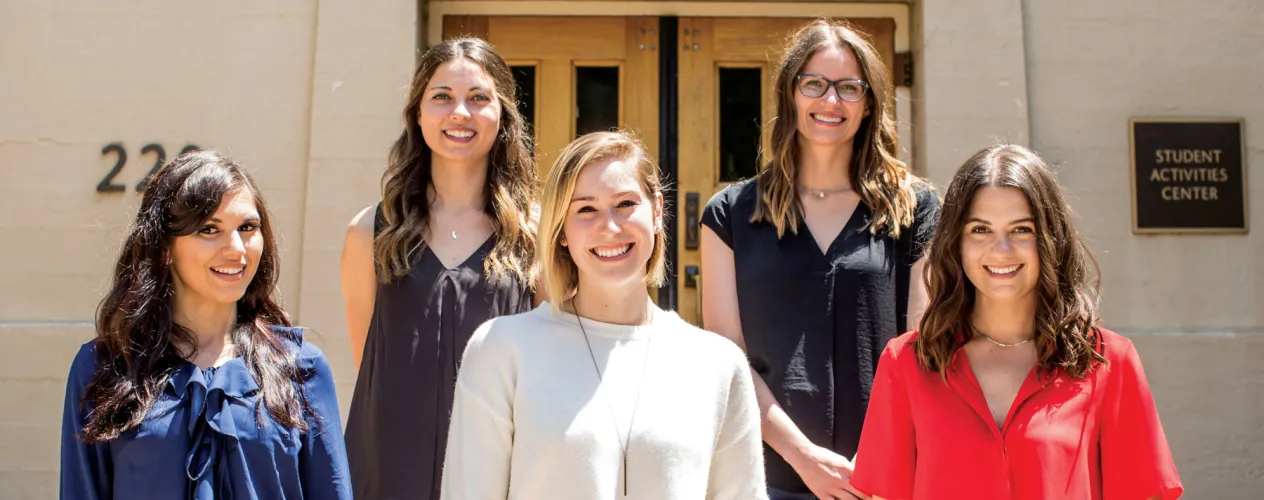Making Rooms for Campus Mothers
FSPH students are leading an initiative to make it easier for women at UCLA to breastfeed and pump.

STUDENTS IN THE FIELDING SCHOOL-BASED Reproductive Health Interest Group (RHIG) are gaining hands-on experience in research and advocacy while addressing an important public health concern on the UCLA campus: support for students, staff and faculty who are breastfeeding.
Five FSPH students are currently leading Creating Space, which is assessing campus lactation accommodations and documenting the experiences of lactating UCLA mothers in an effort to improve services, spaces and university policies to support breastfeeding — touted by the World Health Organization as “one of the most effective ways to ensure child health and survival.” The project, currently in its third year, is funded by UCLA’s Healthy Campus Initiative.
Creating Space was launched in response to a need identified by the student-led Mothers of Color in Academia de UCLA (MOCA), a campus advocacy group. “The women were having a hard time finding suitable places to pump on campus and began to raise awareness about the need for more lactation spaces. RHIG became aware of their advocacy work and decided to partner with MOCA, ultimately establishing the Creating Space project,” says Cristina Hunter, a second-year MPH student in FSPH’s Department of Community Health Sciences who is the current RHIG co-president and Creating Space co-project manager. “But as the project has developed, we’ve realized that it’s not just spaces, but also services and policies that need attention.”
Through an online survey and focus groups of breastfeeding mothers at UCLA, as well as an assessment of lactation rooms on campus, the FSPH students identified significant barriers faced by breastfeeding and pumping mothers, ranging from a shortage of rooms to inappropriate and unsecured spaces lacking amenities usually provided within lactation rooms. “Some of the women had to walk long distances to get to a room and didn’t have time to do that, or had trouble lugging around their supplies,” says Emily Bell, a second-year MPH student in the Department of Community Health Sciences who serves as co-project manager. “Many reported that the stress of finding comfortable, appropriate spaces became a barrier to pumping, and as a result they experienced a reduction in their milk supply.”
 The students are using their grant funds to upgrade existing rooms, and recently issued a report to campus administrators and stakeholders on recommendations for additional lactation rooms and improved policies pertaining to lactation room access. They have recruited and trained three staff members to become certified lactation educator counselors and have worked with UCLA’s Arthur Ashe Student Health & Wellness Center to better serve lactating students. They are also working with UCLA’s Title IX office to create UCLA’s first student lactation policy.
The students are using their grant funds to upgrade existing rooms, and recently issued a report to campus administrators and stakeholders on recommendations for additional lactation rooms and improved policies pertaining to lactation room access. They have recruited and trained three staff members to become certified lactation educator counselors and have worked with UCLA’s Arthur Ashe Student Health & Wellness Center to better serve lactating students. They are also working with UCLA’s Title IX office to create UCLA’s first student lactation policy.
“This is an important gender equity issue,” Hunter says. “Women should have the same opportunities as their male counterparts, and whether it’s in the workplace or the university setting, that means appropriate maternity leave and accommodations when they return to work.”
In bringing their concerns to campus decision-makers, the students have been met with a positive response. “Most people are surprised to learn that this is an issue, but after hearing about it they are on board,” Bell says. “As a society, we promote breastfeeding because of all of the known health benefits, but we have to also be willing to implement the institutional changes that make it possible.”